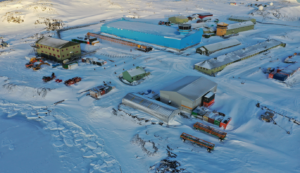64% of global agricultural land at risk of pesticide pollution
64% of land used for agriculture and food crops is at risk of pesticide pollution, according to a new study published in the journal Nature Geoscience.
Researchers from the University of Sydney examined the impact that pesticides are having on soil, the atmosphere and surface and groundwater across 168 countries.
The data revealed that Asia houses the largest land areas at high risk of pollution, with China, Japan, Malaysia, and the Philippines at the highest risk.
Pesticides can be transported to surface waters and groundwater through runoff and infiltration, therefore polluting water bodies and reducing the usability of water resources.
With global pesticide use expected to increase as the global population heads towards an expected 8.5 billion by 2030, the researchers have expressed concern that overuse of pesticides will tip the balance, destabilise ecosystems and degrade the quality of water sources that humans and animals rely on to survive.
Dr Fiona Tang, lead author of the study said: ‘Our study has revealed 64% of the world’s arable land is at risk of pesticide pollution. This is important because the wider scientific literature has found that pesticide pollution can have adverse impacts on human health and the environment.
‘Although the agricultural land in Oceania shows the lowest pesticide pollution risk, Australia’s Murray-Darling basin is considered a high-concern region both due to its water scarcity issues, and its high biodiversity,
‘Globally, our work shows that 34% of the high-risk areas are in high-biodiversity regions, 19% in low-and lower-middle-income nations and 5% in water-scarce areas.
‘In a warmer climate, as the global population grows, the use of pesticides is expected to increase to combat the possible rise in pest invasions and to feed more people.
‘Although protecting food production is essential for human development, reducing pesticide pollution is equivalently crucial to protect the biodiversity that maint soil health and functions, contributing towards food security.’
Photo Credit – Pixabay
















[…] related news, last year the University of Sydney revealed research suggesting 64% of global agricultural land […]